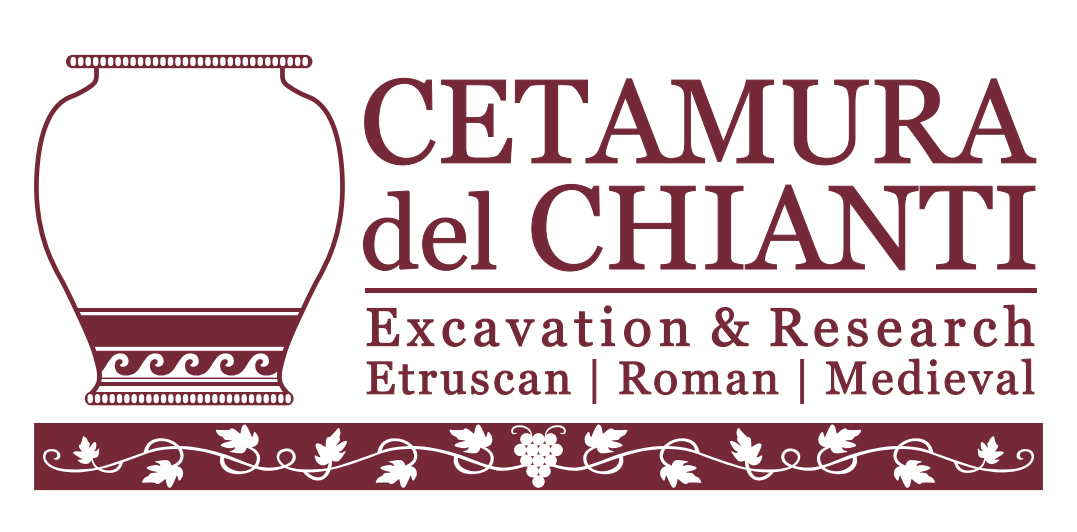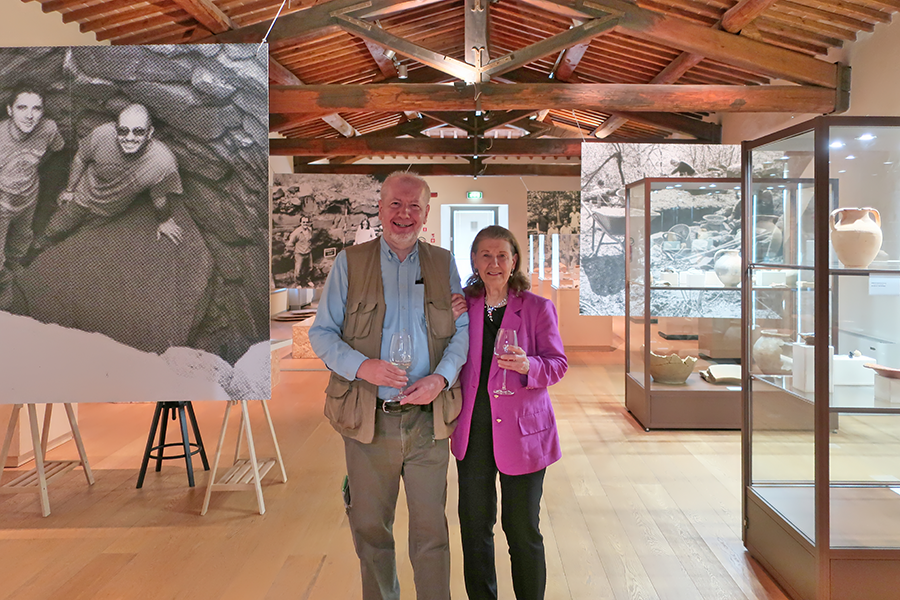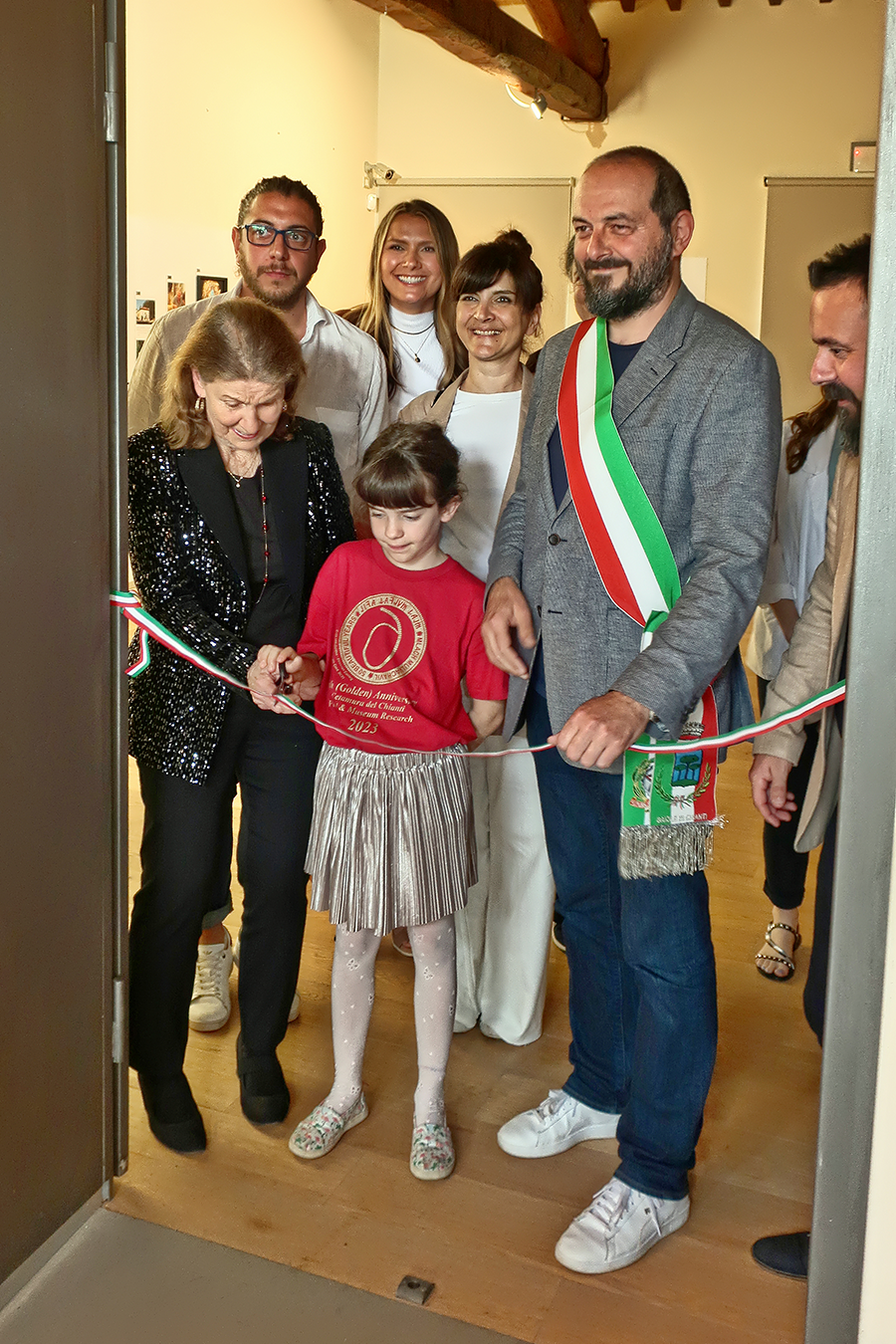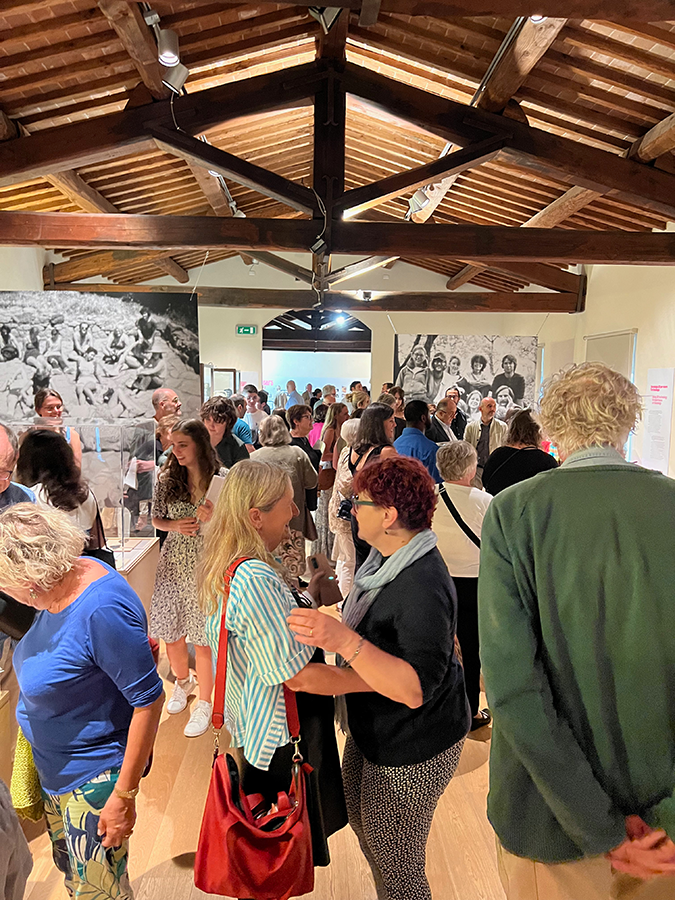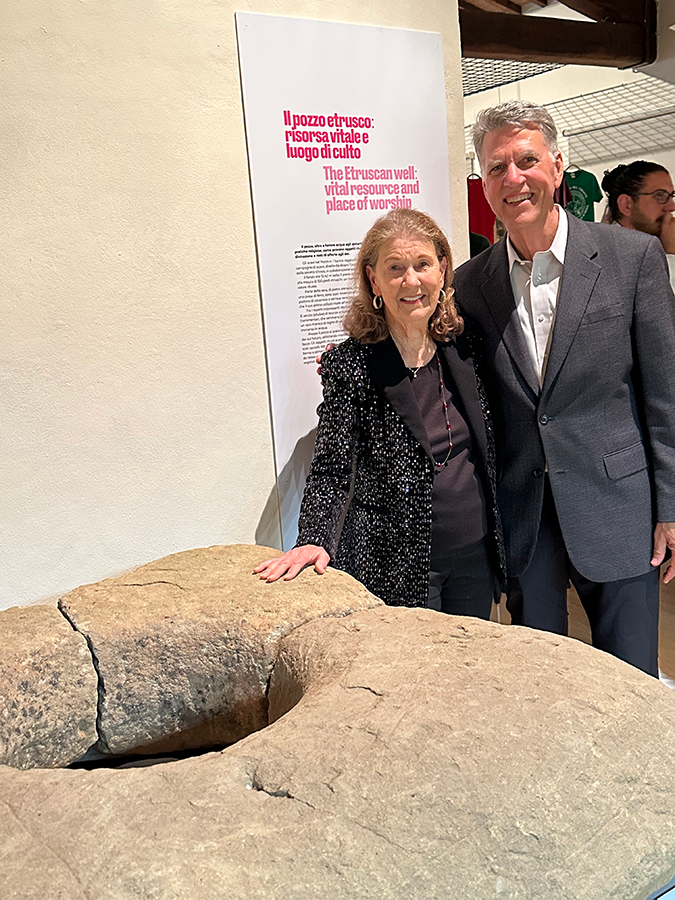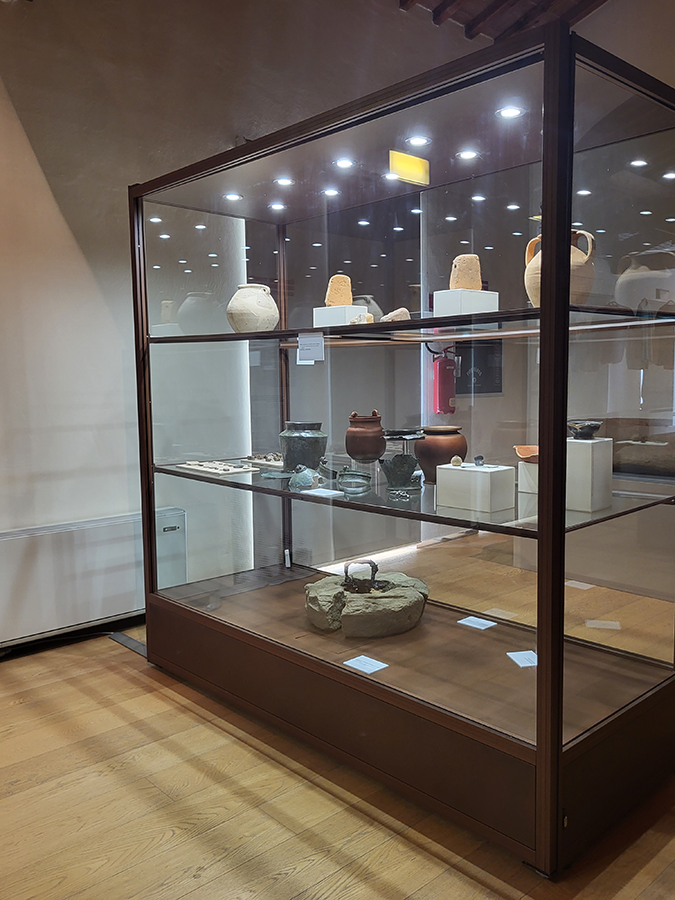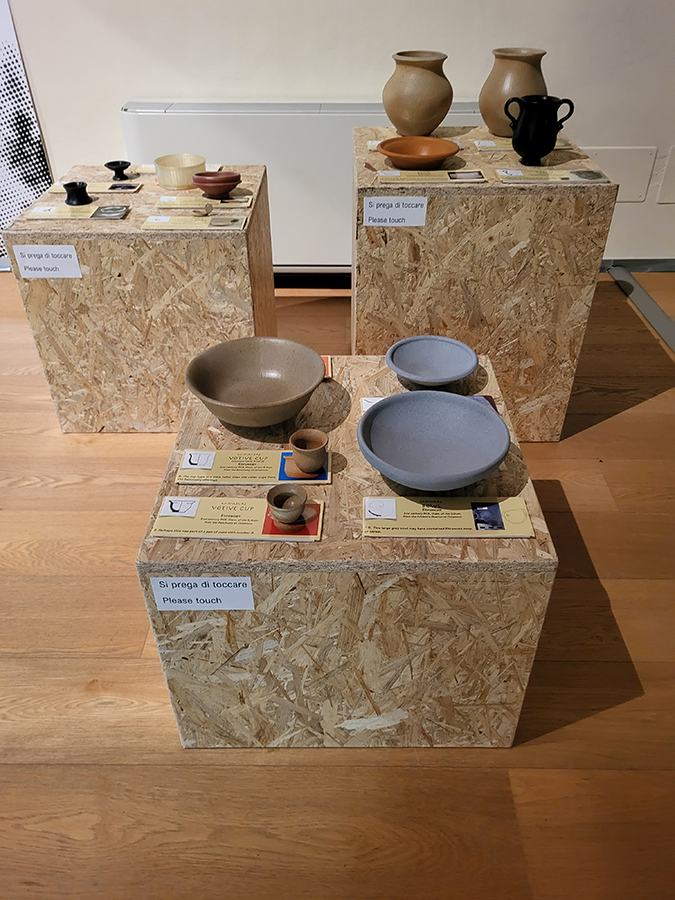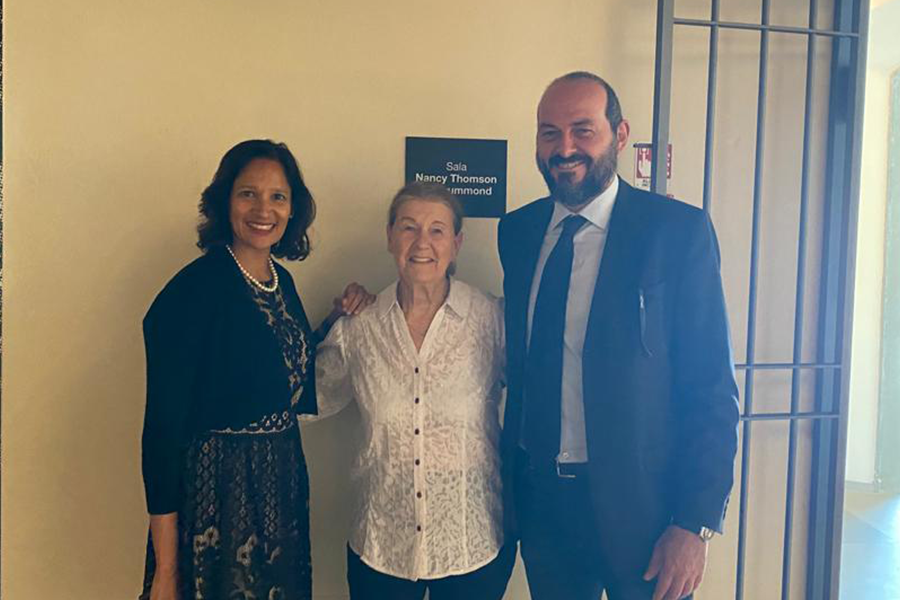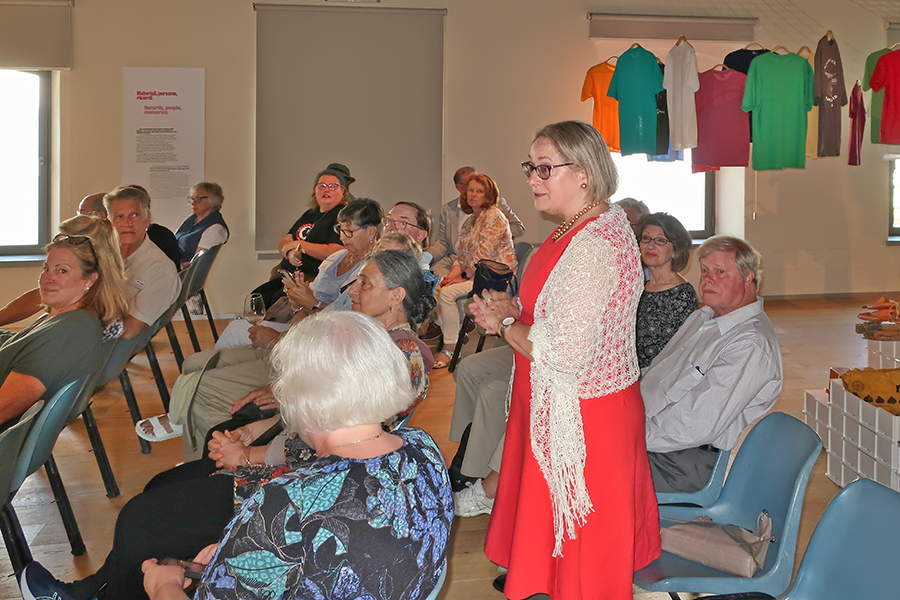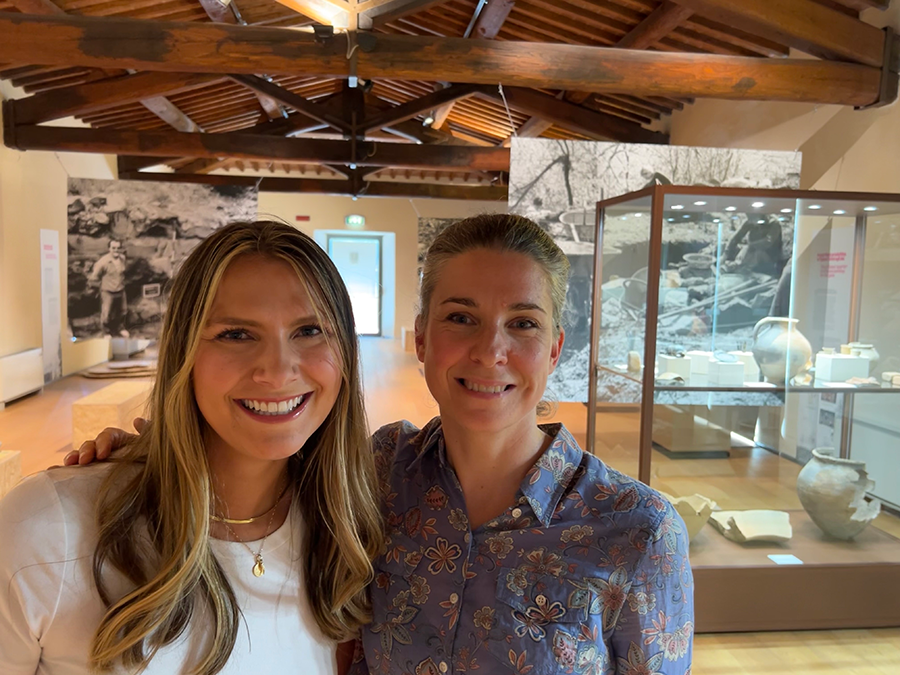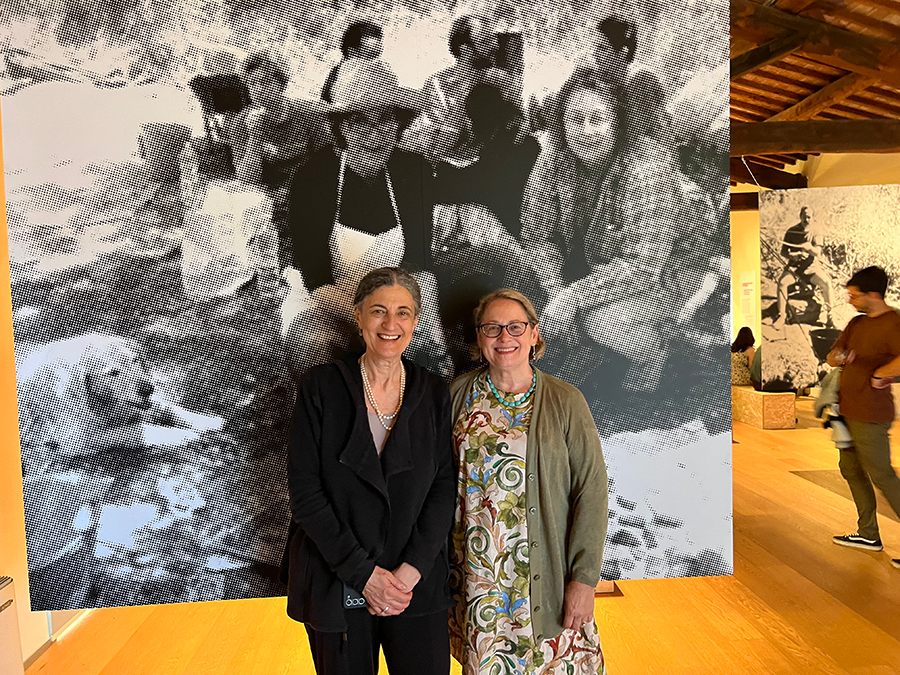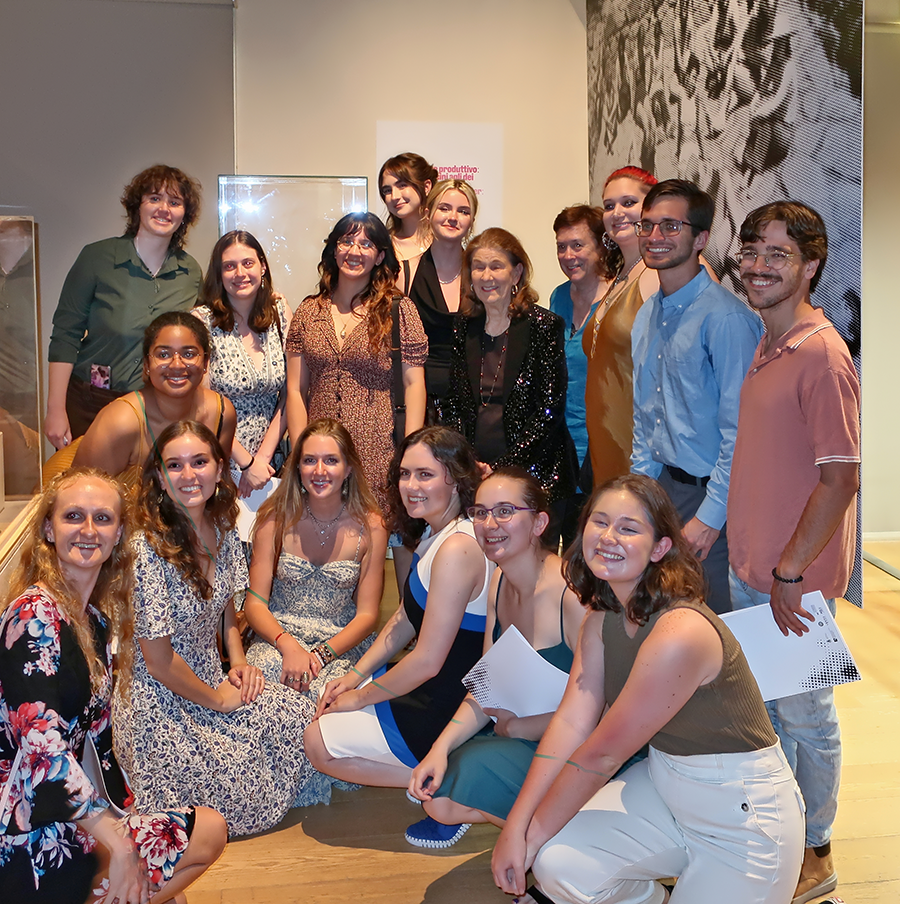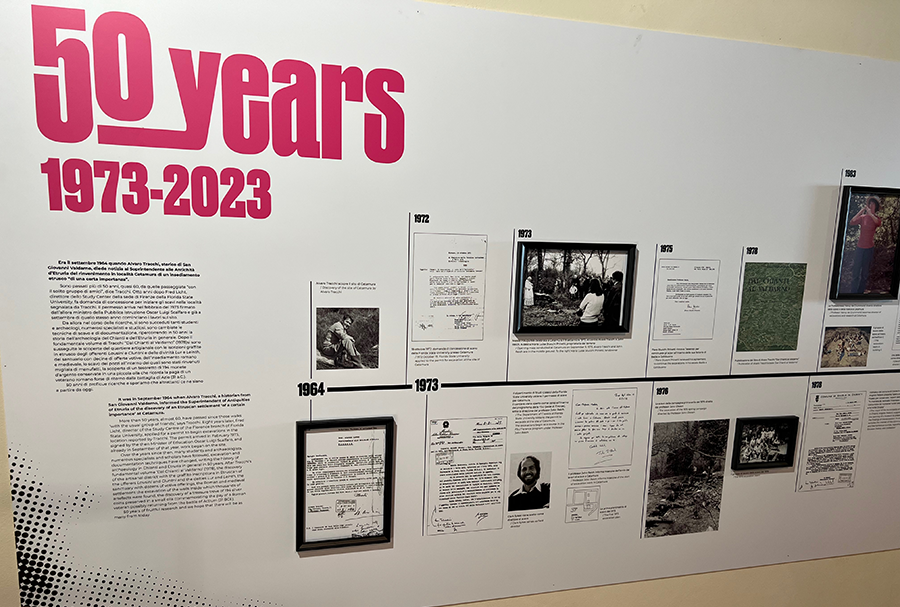GAIOLE IN CHIANTI HOME TO ARTIFACTS FROM THE CETAMURA EXCAVATION SITE
The Museum at the Origins of Chianti is open!
On June 9, 2023, as part of the celebration of the 50th anniversary of excavation at Cetamura by Florida State University, the Museum at the Origins of Chianti (Museo alle Origine del Chianti) at Gaiole in Chianti opened with a commemorative display. It features a number of artifacts that constitute part of the permanent collection of the Etruscan section of the museum, within a setting that stresses the history of the FSU project. The opening was very well attended, including a number of alumni who once dug at Cetamura and a special group of VIPs from the US who are enthusiastic supporters of the work.
THE THEME OF CETAMURA HISTORY
Entitled “Cetamura 50: Records, People, Memories (Materiali, persone, ricordi),” the assemblage contrasts the methods of archaeology from the early years of the dig with some of the most modern technology in use today. A Timeline at the beginning of the exhibition outlines the way in which the project developed through the years and in the middle of the same room is an “island” of old fashioned but cherished excavation paraphernalia. Beginning as a part of an archaeology course in the Florida State University Study Center in Florence on September 9, 1973, the excavation soon was turned into a summer archaeology school stressing the training of students in the field. In recent years, the program has expanded to include a significant component of student experience with archaeological museology.
THE TEAM THAT PREPARED THE SHOW
The Mayor of Gaiole, Michele Pescini, presided over the opening ceremonies, along with Marco Firmati, the scientific director of the new museum. The museum building is under the general management of the firm Opera Laboratori of Florence. Gabriella Carpentiero created the graphic designs for “Cetamura 50,” often utilizing black and white photographs to recall images made with film in cameras before the digital age. Nancy de Grummond collaborated with texts and labels. Nora Marosi, chief conservator for Cetamura, prepared the objects for display and Jessica Rassau, in tandem with the archaeological co-op Ichnos (Francesco Cini, president), planned and executed the ambitious installation of artifacts and technology in the various display areas.
TECHNOLOGY THEN AND NOW
The show carries out the main themes by including abandoned technology such as a carousel projector alongside a modern innovative 3-D printer. In between the devices are old-fashioned 35 mm slides and touchable 3-D printed vessels that are reconstructions of real, but often fragmented, Etruscan pottery displayed in a case nearby. Many of the ancient artifacts came from the Etruscan sanctuary at Cetamura and from Well # 1. A special section also recognizes the historic discovery of thousands of water-logged grape seeds from the well, with references to experimentation with ancient DNA content.
